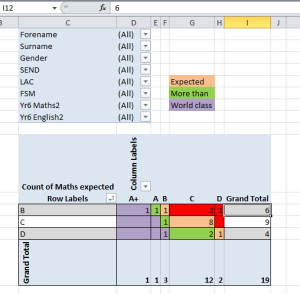#Blogsync post
What is the role of the family in young people’s education?
It is sad that I often hear teachers blaming parents for their child’s attitude and behaviour in school. In my experience, it is rare that an apathetic/rude/naughty/lazy child has a parent with the same behaviours when I’ve come to speak with them.
I’ve found that in many cases where there is a challenging child, there is at least one parent pulling their hair out, not knowing what they can do, at their wits end and usually quite happy to share this.
So, I believe that the family is an essential part of education because we should be talking to the parents to support our aims and through this be supporting them in theirs. We should be working together to ensure they develop the skills they need for life and leave with as many qualifications they need for their next steps.
Calling home
If you say to most secondary students you are going to call home they will respond in one of two ways:
“No. Please don’t call home”
or
“Go on. My mum/dad don’t care”
I’ve learned that the second response is normally not true. It is their way of trying to detract you from doing so. The fascinating discussions I’ve had from parents for whom their child said this. Repeating what they’d said is a great start!
The sad thing is that in many cases the first call home is a negative one. If it is, always try to make the last call home a positive one. I always feedback to the parent on how the new strategy has gone. So if I told them their child is underachieving due to them distracting others, once I’ve moved them in my seating plan and things have settled, I report back.
Some schools have a contact week/fortnight. Teachers are supposed to be in contact with parents as much as possible in this time. Ideally, a quick call with positive news to share. For those of us that teach high numbers of students, plan regular contact weeks and choose students carefully each time.
The problem with calling home is it takes time. However, one late night calling home has the potential to resolve many issues. Don’t let the issues roll on week to week. Nip them in the bud with a call home. 80% of issues are resolved by this.
Parent’s Evenings
I love doing parent’s evenings. I find out so much about the students that they would never have told me. For example, I found out that one student’s father was seriously ill. The child didn’t want anyone to know but mum told me. That changed the relationship I had with that student for the rest of the time I taught them.
In another example, a mother gave me her email. It started off as negative reports back but when the child realised that negative emails has consequences for them at home i.e the x-box is taken from them, they realise it is easier to do as they should in school, for the benefits out of school.
Unfortunately, we often say, those that come to parent’s evenings aren’t the ones we need to see. For many, this is the case so I have advocated a Head of year/progress manager calling home for the ‘top’ 20 students with overall concerns to ensure we are getting in who we need to see. If not, call home yourself.
Playing off of parents
I’ve experienced this a few times. A student will tell you which parent to call. They do this because this is the ‘softer’ parent or the one they can emotionally control. Sometimes this is when parents have split. I now always call both. if they both have access rights, then they both have the right to know. By contacting the parent that they didn’t want you to, it tells the student that a)they’re not the one in control of the situation and b) if they didn’t want both parents to know what the issue is, they shouldn’t have behaved in the manner that has caused the call home. We’ve had some great turn arounds with some students on this. The students are now totally on board and in some ways have more respect because you stood up to them.
Don’t be afraid to be the one in control!
Suggestions for working with parents
- Get their email – instant communication without having to find a phone. Much quicker and easier than a call
- Make the first contact a positive one
- Always present the parent with solutions. Just telling them their child has an issue won’t move things forward. Ask if they are supportive of these solutions. It’s a team effort!
- If you say to a student you will call home, you must do it.
- Allocate a block of time to sit by the phone. Make positive calls as well.
- Record (either in the school system or by email) what was said and let those who need to know, know what was said
- Before contacting home, check how that student is doing elsewhere. I’ve had parents say ‘it’s your subject’, I can then read out their other subject data and prove it isn’t!
- If possible, speak with the student about the conversation you’ve had with the parent to share the outcomes.
The role of parents seems to be underestimated. They have a huge role in the success of their child. We should be engaging with them as soon as they join the school and establish relationships that support the child.










